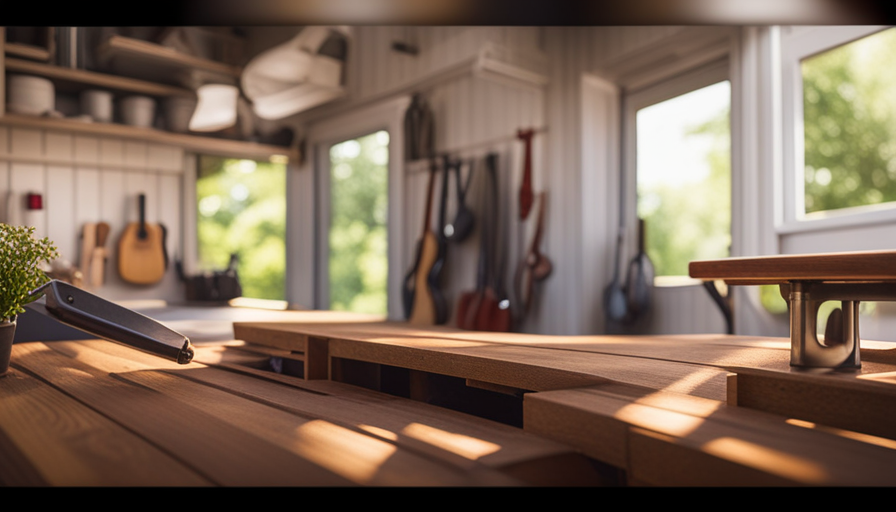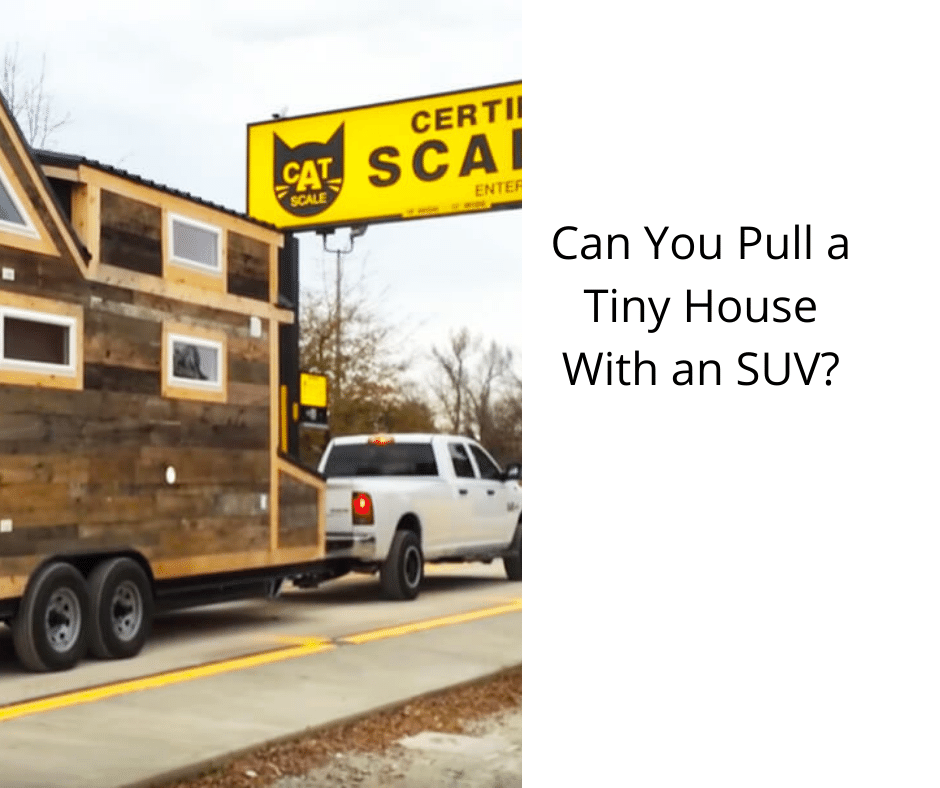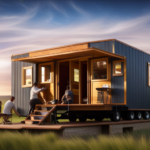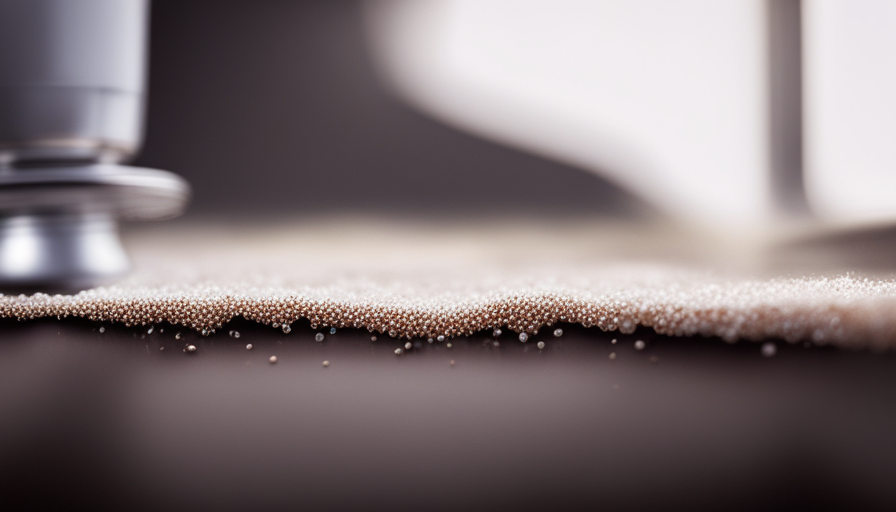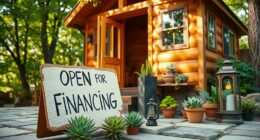Imagine the difficulty of pulling a mobile home on the highway. It may seem like a daunting task, right? However, this is exactly what people do when they choose to live in a tiny house.
These compact dwellings have gained popularity in recent years, offering a minimalist lifestyle with a smaller environmental footprint. But before you can hit the road with your tiny abode in tow, you need to answer one important question: how big of a truck do you need?
In this article, I will guide you through the process of determining the right truck size for your tiny house adventure. We’ll explore the weight of your tiny house, the towing capacity of different truck models, and even consider the road restrictions and permit requirements for oversized loads.
So buckle up and let’s find out how to transport your tiny house safely and efficiently!
Key Takeaways
- Choosing the right truck size and weight distribution calculation are crucial for safe towing of a tiny house.
- Special permits and licenses are required to comply with safety standards and state regulations for oversized loads.
- Consulting a professional hauling service can provide expert advice and assistance with permits, regulations, and potential risks.
- Proper hitching, trailer stability, and consideration of terrain and weather conditions are important for a smooth and secure journey when towing a tiny house.
Consider the Weight of Your Tiny House
If you’re wondering how big of a truck you’d need to haul a tiny house, it’s crucial to consider the weight of your dream home. Calculating weight distribution is an essential step in ensuring a safe and successful towing experience. You’ll need to determine the weight of your tiny house, including all furnishings and appliances, to properly distribute the load. This will help you choose the right trailer hitch for your truck.
To calculate weight distribution, you’ll need to measure the weight of each section of your tiny house, such as the main structure, roof, and interior components. This information will allow you to determine the ideal placement of these sections on the trailer for optimal weight distribution. Additionally, choosing the right trailer hitch is vital to ensure a secure connection between your truck and tiny house.
Once you’ve calculated the weight distribution and selected the appropriate trailer hitch, you can move on to determining the towing capacity of different truck models. This’ll help you find a truck that can handle the weight of your tiny house and provide a smooth towing experience. By considering the weight of your tiny house and selecting the right equipment, you can confidently embark on your journey to haul your dream home.
Determine the Towing Capacity of Different Truck Models
To ascertain the towing capacity of various truck models, one must consider their size and capabilities. To help you compare different truck brands, I have created a table that shows the towing capacity of some popular models. Keep in mind that these numbers can vary depending on the specific configuration of the truck.
| Truck Model | Towing Capacity (lbs) |
|---|---|
| Ford F-150 | 12,000 |
| Chevrolet Silverado | 13,400 |
| Ram 1500 | 12,750 |
| Toyota Tundra | 10,200 |
| GMC Sierra | 12,100 |
When choosing a truck to haul your tiny house, it is important to consider not only the weight of the house but also the fuel consumption. Larger trucks with higher towing capacities tend to consume more fuel. Therefore, it’s essential to find a balance between towing capacity and fuel efficiency.
Now that you have determined the towing capacity of different truck models, the next step is to calculate the dimensions of your tiny house. This will ensure that you choose a truck with the appropriate size and towing capacity to safely transport your home.
Calculate the Dimensions of Your Tiny House
Once you’ve determined the towing capacity of different truck models, it’s time to envision the perfect dimensions for your cozy dream home. To calculate the dimensions of your tiny house, there are several design considerations to keep in mind.
Firstly, think about how many rooms you want and their sizes. Consider the layout and flow of the space, ensuring that it’s functional and meets your needs. Remember to include storage solutions that maximize space efficiency.
Next, assess the length and width restrictions on roads and highways. This is important to ensure that your tiny house can be transported safely and legally. Measure the width of your chosen truck’s towing hitch to determine the maximum width of your tiny house. Additionally, measure the length of the truck and trailer combination to ensure it falls within legal limits.
Lastly, consider the overall height of your tiny house. Take into account any height restrictions such as bridges or power lines that could pose a problem during transportation.
With these design considerations and measurements in mind, you can create the perfect dimensions for your tiny house. Assessing the length and width restrictions on roads and highways will be the next important step in bringing your dream home to life.
Assess the Length and Width Restrictions on Roads and Highways
Considering the length and width restrictions on roads and highways is crucial in ensuring the safe and legal transportation of your compact dream home. Assessing road conditions and understanding weight restrictions are essential steps in planning the logistics of hauling a tiny house.
Firstly, it’s important to evaluate the road conditions along your planned route. Some roads may have weight restrictions, which can vary depending on the area and the type of road. These restrictions are in place to protect the infrastructure and ensure the safety of all road users. By assessing road conditions, you can identify any potential challenges or obstacles that may arise during transport.
Secondly, understanding weight restrictions is vital. Exceeding the weight limits can cause damage to the road surface, leading to costly repairs and potential accidents. It’s crucial to know the weight of your tiny house, including any additional weight from furnishings or appliances. This information will help you determine whether any weight restrictions on the route can accommodate your tiny house and the truck hauling it.
Assessing road conditions and understanding weight restrictions are critical in planning the transportation of your tiny house. By considering these factors, you can ensure a smooth and legal journey for your compact dream home. Researching the licensing and permit requirements for oversized loads is the next step in the process.
Research the Licensing and Permit Requirements for Oversized Loads
Navigating the labyrinth of licensing and permit requirements for oversized loads can feel like embarking on an epic quest for approval. When it comes to hauling a tiny house, understanding the licensing and permit requirements is crucial to ensure a smooth and legal journey.
Each state has its own regulations regarding oversized loads, and it’s important to research and comply with these rules before hitting the road. Licensing requirements for oversized loads typically involve obtaining a special permit or license. These permits are necessary to ensure that the load meets safety standards and doesn’t pose a risk to other drivers or infrastructure. The specific requirements vary by state, but they often include providing detailed information about the load, such as its dimensions, weight, and route. Additionally, some states may require escorts or pilot vehicles for certain oversized loads.
Permit requirements for oversized loads involve obtaining permission to transport the load on specific roads and highways. This ensures that the load can safely navigate through areas with potential clearance issues, such as bridges or tunnels. The permits may also specify certain time restrictions or alternate routes to minimize disruption to traffic.
To ensure compliance with licensing and permit requirements, it’s advisable to consult with a professional hauling service for expert advice. They can guide you through the process, help you obtain the necessary permits, and provide valuable insights based on their experience in the field. With their assistance, you can navigate the complex web of regulations and embark on your journey with confidence.
Consult with a Professional Hauling Service for Expert Advice
After thoroughly researching the licensing and permit requirements for oversized loads, I realized that there’s a lot more to consider when hauling a tiny house than I initially thought. That’s why I decided to consult with a professional hauling service to get some expert advice.
Consulting with a professional hauling service has many benefits. Firstly, they have extensive experience in transporting various types of loads, including oversized ones. They can provide valuable insights and guidance on the specific requirements and regulations for hauling a tiny house. This ensures that you stay compliant with the law and avoid any potential legal issues during the transportation process.
Additionally, a professional hauling service can assess the potential risks involved in hauling a tiny house and provide strategies to mitigate them. They have the necessary knowledge and expertise to identify potential obstacles, such as low bridges or narrow roads, and find alternative routes or solutions.
By consulting with a professional hauling service, I can ensure that I have all the necessary information and guidance to safely transport my tiny house. Understanding the importance of proper hitching and trailer stability is crucial in this process, and the next step will cover this in detail.
Understand the Importance of Proper Hitching and Trailer Stability
To ensure a smooth and secure journey, it’s crucial to grasp the significance of properly hitching your trailer and maintaining its stability. Proper hitching and trailer stability are safety considerations that shouldn’t be overlooked. Here are five key factors to consider:
-
Weight distribution: Distributing the weight evenly across the trailer is essential for maintaining stability during transport. Uneven weight distribution can lead to swaying or fishtailing, which can be dangerous.
-
Towing techniques: Understanding and implementing proper towing techniques, such as maintaining a safe speed and keeping a safe distance from other vehicles, is crucial for a safe and stable journey.
-
Hitching equipment: Choosing the right hitching equipment, such as a weight distribution hitch or sway control system, can greatly enhance the stability of your trailer and improve overall towing performance.
-
Safety considerations: Regularly inspecting and maintaining your trailer’s tires, brakes, and lights can help prevent accidents and ensure a safe journey.
-
Trailer sway control: Understanding how to control trailer sway, especially in windy conditions or when passing large vehicles, is vital for maintaining stability on the road.
Taking these factors into account will help you properly hitch your trailer and ensure its stability during transport.
Next, we’ll discuss how to take into account the terrain and conditions of your travel route.
Take into Account the Terrain and Conditions of Your Travel Route
Considering the terrain and conditions of your travel route will greatly impact the stability and safety of towing your trailer. It’s crucial to carefully plan and evaluate the travel logistics before embarking on your journey with a tiny house in tow.
The first factor to consider is the terrain you’ll be traversing. Are you going to encounter steep hills, winding roads, or rough terrains? These factors will determine the type of truck you’ll need to safely haul your tiny house.
In addition to the terrain, the weather conditions along your travel route must also be taken into account. Will you be driving through areas prone to heavy rain, snow, or strong winds? Inclement weather can significantly affect the handling and stability of your trailer. It’s important to ensure that your truck is capable of handling these conditions and that you’re prepared for any potential challenges that may arise.
Considering the travel logistics and weather conditions, it’s crucial to choose a truck that can handle the demands of towing a tiny house. However, it’s important to note that larger trucks may consume more fuel and have higher operating costs. Therefore, it’s essential to consider the fuel efficiency and cost of operating a larger truck.
Consider the Fuel Efficiency and Cost of Operating a Larger Truck
When it comes to towing a tiny house, it’s important to keep in mind that a larger truck may guzzle more gas and come with higher operating expenses. Therefore, it’s crucial to consider the fuel efficiency and cost analysis before deciding on the size of the truck you need.
A larger truck will generally have a lower fuel efficiency due to its heavier weight and larger engine. This means that you will need to spend more on gas for each trip you make. Additionally, the operating expenses of a larger truck, such as maintenance and insurance, will also be higher compared to a smaller truck.
Therefore, it’s essential to carefully analyze the fuel efficiency and cost implications of operating a larger truck when deciding on the size you need for towing a tiny house.
Considering the fuel efficiency and cost analysis is just one aspect of planning for the transportation of a tiny house. Another important factor to consider is the safety and security during the journey.
Plan for Safety and Security During Transportation
Ensuring a smooth and worry-free journey, it’s crucial to prioritize the safety and security of your precious cargo while on the move. When planning to transport a tiny house, it is important to have a well-thought-out strategy in place to address potential obstacles and ensure the protection of your investment.
First and foremost, consider the route that you’ll be taking and plan for any potential obstacles along the way. Take note of low bridges, narrow roads, or weight restrictions that may hinder the transportation process. By doing so, you can avoid unnecessary delays and ensure a safe journey.
Additionally, it’s essential to budget for transportation costs. This includes not only fuel expenses but also any necessary permits or escorts required for oversized loads. Research and calculate the overall expenses involved in moving your tiny house to avoid any financial surprises.
To enhance the safety and security of your tiny house during transportation, it’s recommended to secure all loose items inside the house. Use straps or bungee cords to secure furniture, appliances, and other belongings to prevent them from shifting or getting damaged during transit.
Planning for potential obstacles and budgeting for transportation costs are crucial steps when considering the safety and security of your tiny house during transportation. By doing so, you can ensure a worry-free journey and protect your valuable investment.
Frequently Asked Questions
What are the dimensions of a typical tiny house?
Typical tiny houses come in various dimensions, but they’re all about compact living. Picture a cozy abode that’s like a snug little nest.
These pocket-sized homes often measure around 100 to 400 square feet, with heights typically under 13.5 feet for easy transportation.
While the dimensions may seem small, the advantages of tiny house living are immense: financial freedom, reduced environmental impact, and a simpler, clutter-free lifestyle.
How do I calculate the weight of my tiny house?
To calculate the weight of my tiny house, I need to consider various factors such as the materials used, furniture, appliances, and structural components. I can start by obtaining the weights of individual items and then add them up.
It’s important to ensure proper weight distribution within the tiny house to maintain stability during transportation. This can be achieved by placing heavier items closer to the center and securing them properly.
Are there any specific regulations or restrictions for towing oversized loads?
There are specific regulations and restrictions when it comes to towing oversized loads. These regulations vary by state and may include requirements such as obtaining permits, using pilot vehicles, and adhering to specific routes and times for travel.
It’s important to consult with the Department of Transportation in your state to ensure you’re in compliance with all the necessary regulations before towing an oversized load.
What are the fuel efficiency differences between different truck models?
When comparing fuel efficiency between different truck models, there are several factors to consider. These factors include the engine type, weight of the truck, aerodynamics, and transmission. Trucks with smaller engines and lighter weights generally have better fuel efficiency. Additionally, trucks with advanced aerodynamic features, such as streamlined designs or active grille shutters, can also improve fuel economy. Different transmission options, such as manual or automatic, can also impact fuel efficiency.
How can I ensure the safety and security of my tiny house during transportation?
To ensure the safety and security of my tiny house during transportation, I’d start by ensuring insurance coverage for any potential damages or accidents that may occur.
Additionally, I’d secure the tiny house by properly fastening it to the truck using heavy-duty straps and chains. This would prevent any movement or shifting during transit.
Regularly inspecting the fastenings and making adjustments if necessary would also be crucial to maintain the stability and safety of the tiny house.
Conclusion
After carefully considering the weight, dimensions, and regulations involved, it’s clear that finding the right truck to haul a tiny house is no small task.
Just like a skilled architect meticulously designs a structure, one must carefully select a truck that can handle the load. It’s like finding the perfect puzzle piece to complete the picture.
So, whether you’re crossing rugged terrains or cruising down highways, remember that choosing the right truck is the key to a safe and successful journey.
Hi, I’m Emma. I’m the Editor in Chief of Tiny House 43, a blog all about tiny houses. While tree houses are often associated with childhood, they can be the perfect adult retreat. They offer a cozy space to relax and unwind, surrounded by nature. And since they’re typically built on stilts or raised platforms, they offer stunning views that traditional homes simply can’t match. If you’re looking for a unique and romantic getaway, a tree house tiny house might just be the perfect option.

